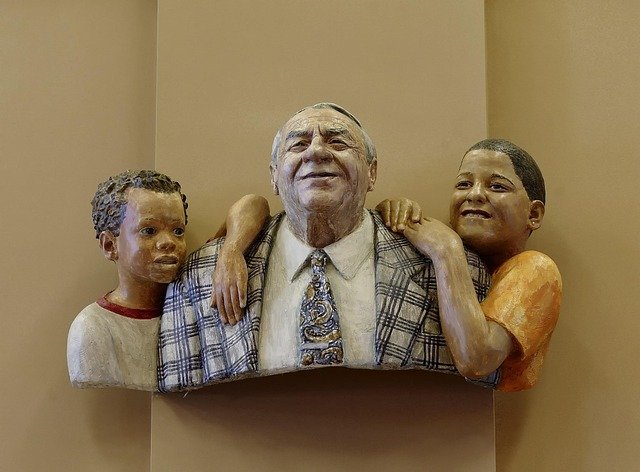How Baby Names Have Changed Over Time
Learn how people choose baby names and why names can be very different in each country and culture. Explore popular names from the past and today, see how trends shift over the years, and discover interesting patterns that make names unique and meaningful for families.

The Evolution of Baby Name Trends Through Decades
Baby name trends follow distinct patterns that mirror the cultural climate of each decade. In the early 20th century, traditional biblical names like Mary, John, and James dominated birth certificates, reflecting strong religious influences. The post-World War II era saw the rise of baby boomers receiving mainstream, conformist names like Linda, Susan, Robert, and Michael. By the 1960s and 1970s, counterculture movements inspired nature-themed names like Amber and Crystal. The 1980s and 1990s introduced more unique spellings and creative variations, while the early 2000s embraced vintage revivals and place names. Today’s trends show unprecedented diversity, with parents seeking names that are simultaneously unique yet meaningful, often drawing inspiration from various cultural traditions and media influences.
How Popular Baby Names Reflect Cultural Shifts
The ebb and flow of baby name popularity serves as a cultural barometer for each generation. Names that surge in popularity often reflect contemporary heroes, entertainment icons, or social movements. For instance, the name “Diana” saw significant spikes following Princess Diana’s royal wedding and again after her tragic death. Similarly, names from popular television shows and films frequently experience sudden popularity surges—the name “Arya” climbed significantly in rankings following the success of Game of Thrones. Political and historical events also leave their mark on naming patterns. After Barack Obama’s election, the names Barack and Malia saw increased usage. These patterns demonstrate how closely naming practices are tied to our collective consciousness and cultural moments that resonate with parents.
The Rise of Unique Baby Names and Individuality
Modern parents increasingly prioritize uniqueness when selecting names, moving away from previously common practices of choosing family names or popular standards. This shift reflects broader societal changes valuing individuality and personal expression. Parents now intentionally seek names with distinctive spellings (Madisyn instead of Madison), combine elements to create new names (like Jayden or Braylen), or revive obscure historical or literary names. This trend toward uniqueness accelerated with the internet age, as parents gained easy access to extensive name databases and became more aware of naming patterns in their communities. Some researchers suggest this movement toward distinctive naming practices corresponds with increasing emphasis on personal identity and standing out in a competitive, individualistic society.
Analyzing Baby Name Popularity Through Data
The systematic collection and analysis of baby name data reveals fascinating patterns about naming conventions over time. The Social Security Administration has tracked American baby names since 1880, creating one of the most comprehensive naming databases in history. This data shows clear trends, including the dramatic decrease in name concentration—in 1950, the top 25 boys’ names covered nearly 40% of all male babies, while today that percentage has fallen below 15%. Modern naming patterns reveal greater diversity, with popularity peaks being shorter and less pronounced than in previous generations. Regional differences also emerge in the data, with certain names showing strong geographical preferences. Digital tools now allow researchers and curious parents to visualize these trends, tracking name popularity curves, predicting future trends, and identifying names that appear to be approaching either peak popularity or decline.
Cultural Influences on Baby Name Origins
The etymological roots of popular baby names have diversified significantly over time, reflecting changing immigration patterns and multicultural awareness. While English, biblical, and traditional European names once dominated American naming practices, today’s baby name landscape draws from a much broader palette of cultural influences. Names with Arabic, African, Asian, and Indigenous origins have gained mainstream acceptance, reflecting America’s evolving multicultural identity. Globalization and increased cultural exchange have normalized previously unfamiliar naming traditions. Additionally, naming practices have become more fluid across traditional gender boundaries, with historically male names like Riley, Jordan, and Avery becoming increasingly popular for girls. This evolution reflects broader societal shifts toward multiculturalism and changing perspectives on gender, creating a more diverse naming environment than at any previous point in history.
The Impact of Technology on Modern Naming Practices
Digital tools and social media have revolutionized how parents approach naming their children. Online resources provide immediate access to name meanings, popularity rankings, and trend forecasts that were unavailable to previous generations. Parents can now research name origins, verify pronunciation, and even test potential names through social media polling. Baby name apps offer features like compatibility testing with siblings’ names or suggesting names based on parental preferences. This wealth of information has made naming more deliberate but also potentially more anxiety-inducing, as parents weigh factors like online searchability, domain name availability, and potential negative associations. The digital landscape has also accelerated naming trends, with names rising and falling in popularity more rapidly than in pre-internet eras, creating new challenges for parents seeking names that feel both fresh and enduring.
Baby names remain powerful cultural artifacts that connect us to our history while reflecting our hopes for the future. As naming practices continue to evolve, they will undoubtedly continue to tell the story of our changing society, values, and aspirations for the next generation.




